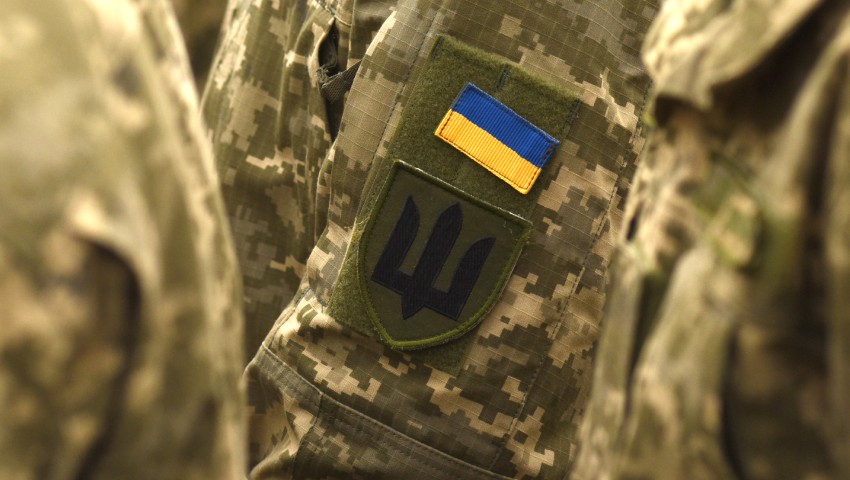With over 800 kamikaze drones scheduled for delivery from the United States to Ukraine, will this capability be enough to give the Ukrainian military a competitive edge?
Since Russia’s invasion of Ukraine began, the United States alone has provided US$2.6 billion in military aid to the beleaguered Ukrainian government and armed forces. This has been bolstered by £200 million in military aid from the United Kingdom and lethal donations from across the western world.
As images of Ukrainian battlefields beam on screens across the globe, much of the lethal military equipment donated by the US and their allies have become household names.
Yet few pieces of equipment have stolen the limelight quite like loitering munitions, or “kamikaze drones”.
In circulation, there appears to be two types of loitering munitions.
The first is the Switchblade drone. In mid-April, the Pentagon pledged an additional 600 units on top of the initial 100 promised to the Ukrainian government – bringing a total of 700 Switchblades delivered or in the process of delivery to Ukraine. These Switchblade 300s are the lighter version of the Switchblade 600, with sources suggesting that 10 Switchblade 600s have been pledged to Ukraine.
The second is the Phoenix Ghost, which is a custom-built loitering munition designed for use on the Ukrainian battlefield by soldiers with little training in loitering munitions. Little is known about the development of this product, but it is expected that it was hastily developed by US defence business AEVEX Aerospace and the US Air Force tailored for the Ukrainian battlefield. A total 121 of the systems have been earmarked for delivery in Pentagon’s latest $800 million package.
⚡️Pentagon develops drone system for Ukraine.
The Phoenix Ghost drone system was developed to meet Ukrainian needs, with a minimal amount of training needed for Ukrainian forces, Pentagon spokesperson John Kirby said. The new U.S. military aid package includes 121 such systems.— The Kyiv Independent (@KyivIndependent) April 21, 2022
Many, including General (Ret’d) David Petraeus, have billed the drones a “game-changer” in the defence of Ukraine against the invading forces.
However, US Army Major Brennan Deveraux, writing in War on the Rocks this week urged a more moderate view of the systems and corrected some widely held misconceptions about their technological genesis.
“While Ukraine will undoubtedly find tactical successes with US-made loitering munitions, the viral videos and supporting information campaign that is likely to follow will obscure and inflate the weapon’s role on the battlefield,” MAJ Deveraux argues.
Simply, the military strategist and soldier argues that the systems themselves will not be able to “turn the tide” of the invasion. He notes that many people’s concept of the impact of loitering munitions comes from the Nagorno-Karabakh conflict which may yet prove to be an outlier in the impact that loitering munitions will have on the battlefield. Rather, “the West should draw lessons from their employment in Ukraine”.
Nevertheless, they will prove to be an impactful tool as the systems are designed for battlefield deployment thus enabling “small units to discreetly deploy the weapon”, thus enabling Ukrainian infantry units and SOF teams to affect large operational-strategic level disruptions.
However, like all military technology – not all loitering munitions are built the same.
“The loiter time varies between models. Those [Switchblades] being used in Ukraine can stay airborne from 30 to 60 minutes, while some Israeli systems can loiter for nine hours.”
Meanwhile Politico explained that the newly developed – and still mysterious – Phoenix Ghost is a vertical take-off platform that boasts a six-hour fly time, enabling it to stalk its targets for a longer time.
Nevertheless, it is important for defence industry to correctly understand the technology behind the capability.
In his analysis, MAJ Deveraux corrected the record on the colloquial assumption that loitering munitions are drones. Rather, their characteristics are closer to those of missiles than uncrewed vehicles.
“Loitering munitions are in a category of their own. It is misleading to simply bin them with drones. They are more akin to a smart missile than an aircraft,” he said.
“Loitering munitions are one-time-use weapons designed to find a target and crash into it, giving it its ‘kamikaze’ nickname.”
It remains to be seen how much the new munitions will change the war.
President Joe Biden confirmed that the most recent agreement has been tailored for the new phase of the war, focused on the military confrontation in the Donbas. Perhaps the newly developed system has capabilities that the Pentagon is not yet willing to share.
“Last week, I signed an $800 million package of security assistance to Ukraine that included new capabilities like artillery systems and armored personnel carriers – equipment that is responsive to Ukraine’s needs and tailored to support the intensified fighting in the Donbas region, which is a different war than in other places because both – topographically it’s different,” the President said.
Get involved with the discussion and let us know your thoughts on Australia’s future role and position in the Indo-Pacific region and what you would like to see from Australia's political leaders in terms of partisan and bipartisan agenda setting in the comments section below, or get in touch with









